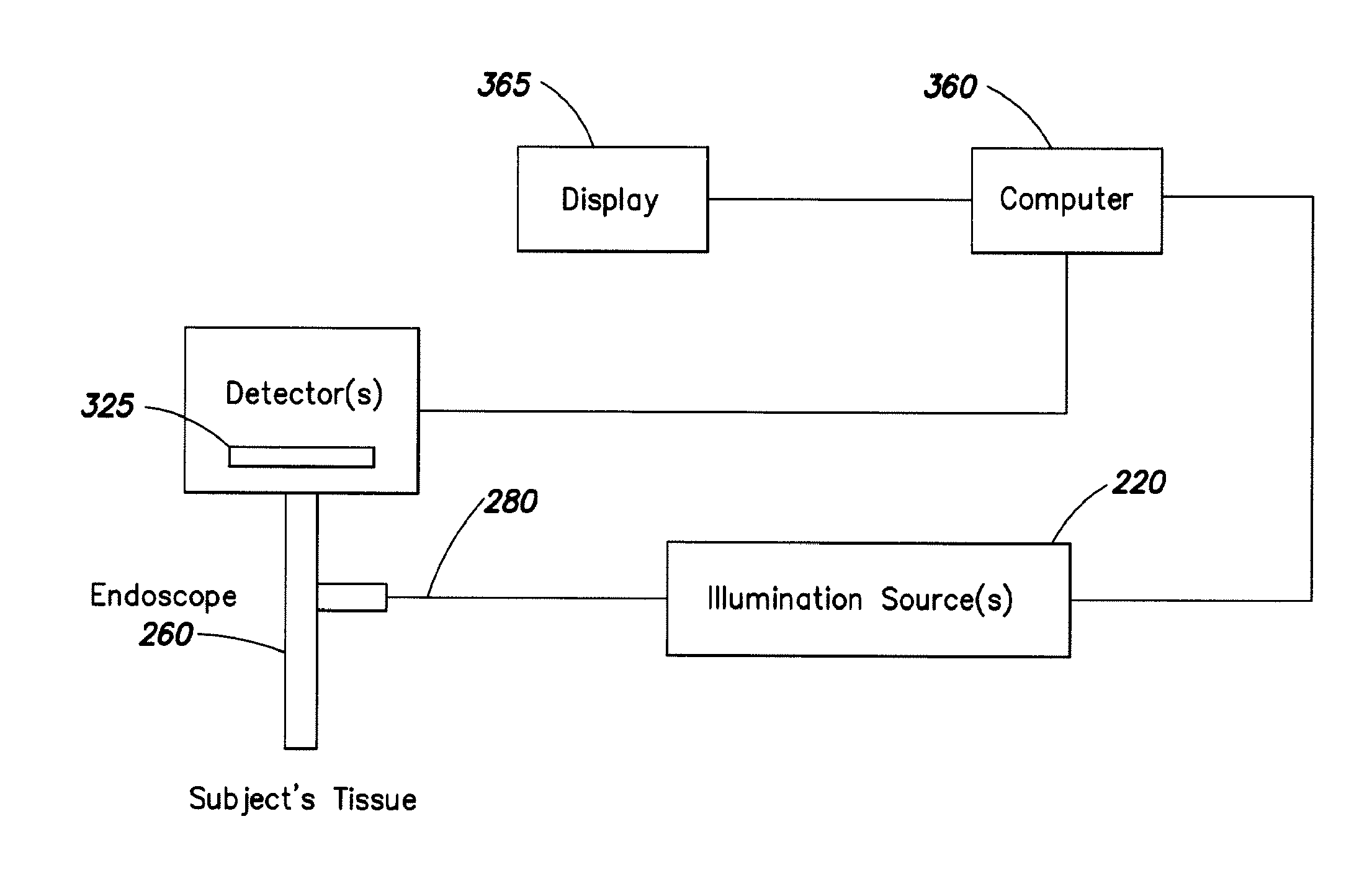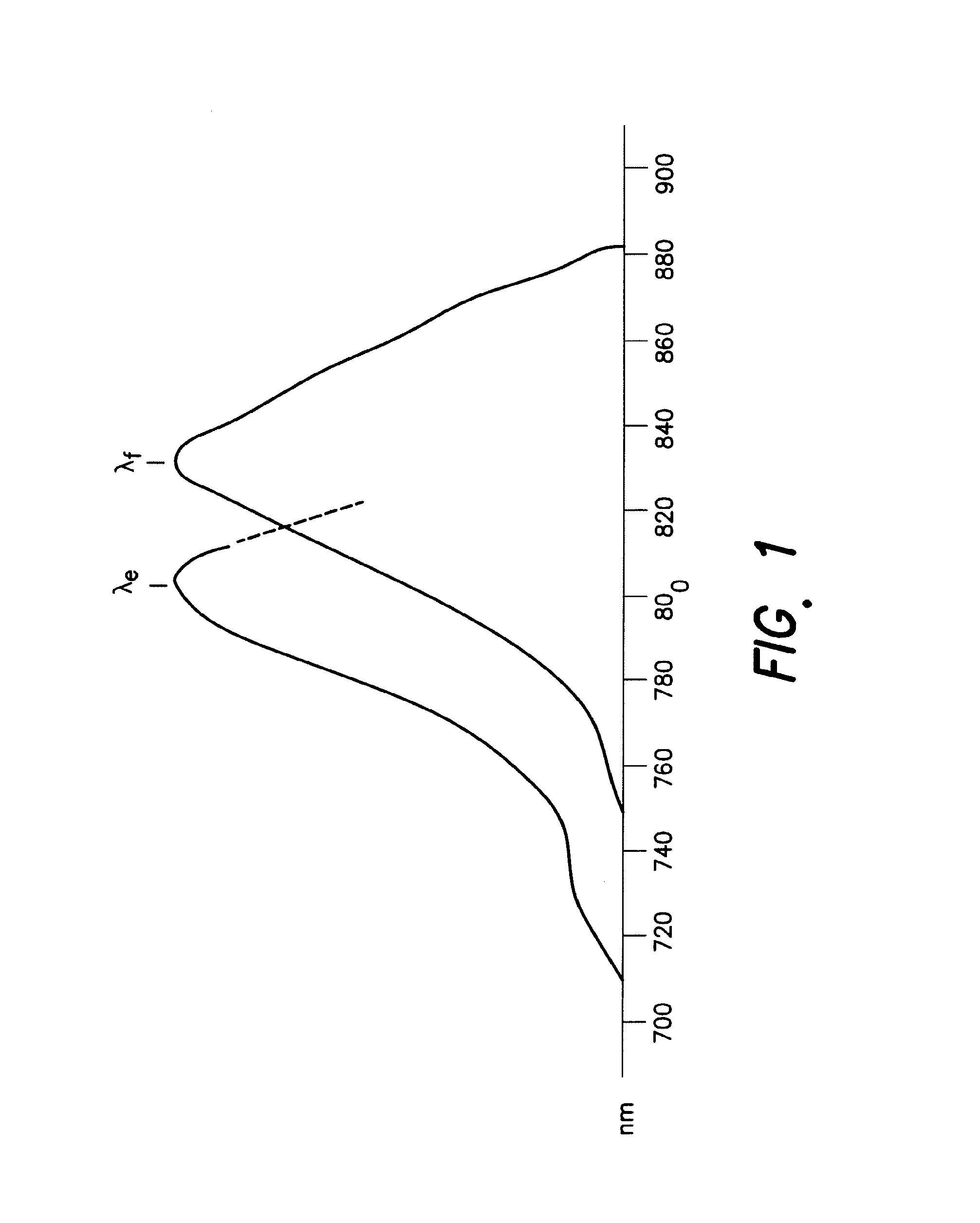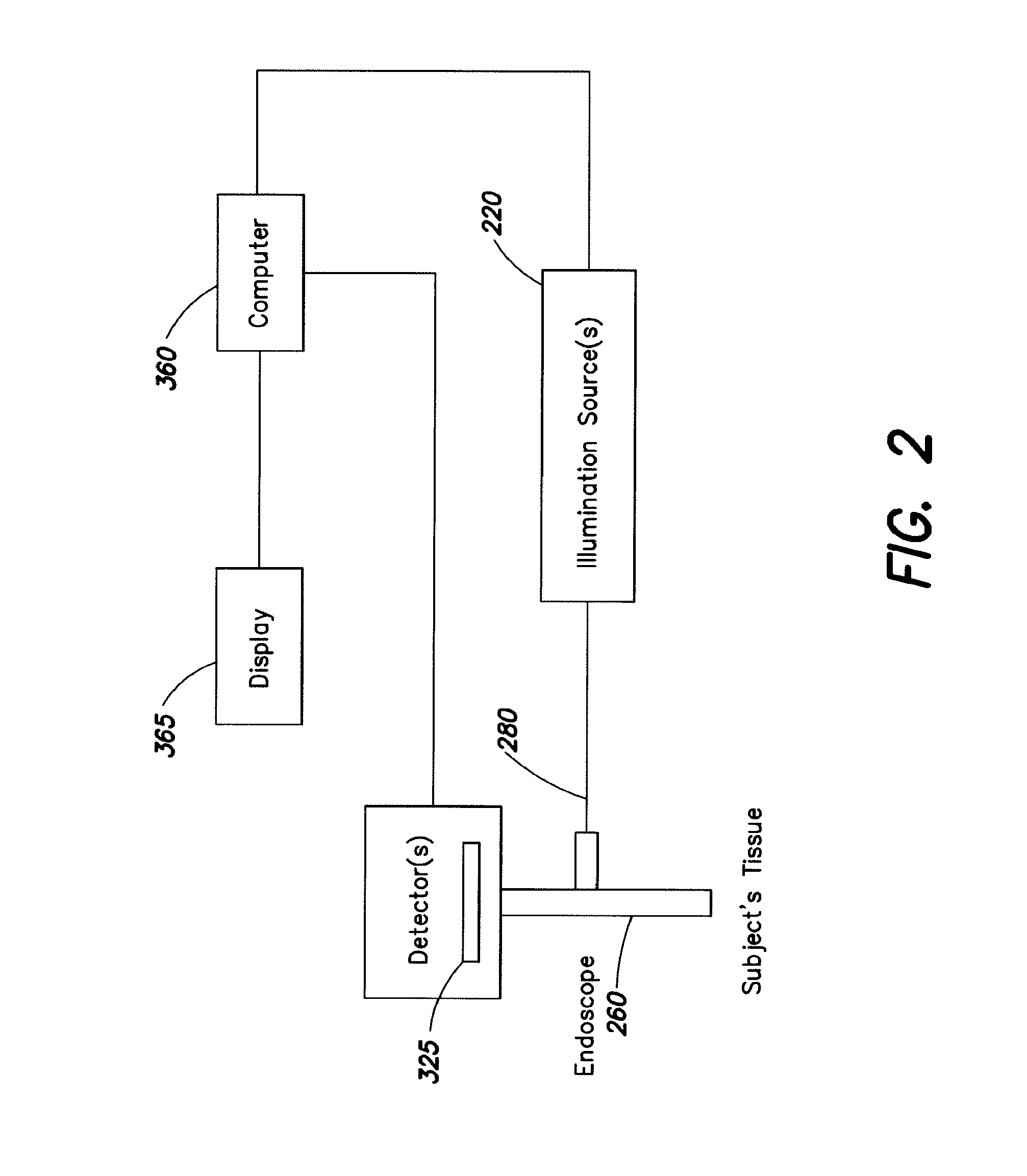Near Infrared Imaging
a technology of infrared imaging and endoscope, which is applied in the field of endoscopes, can solve the problems of limited flexibility, not found wide acceptance, and the doctor is left with no means to view within the patient's body
- Summary
- Abstract
- Description
- Claims
- Application Information
AI Technical Summary
Benefits of technology
Problems solved by technology
Method used
Image
Examples
Embodiment Construction
[0033]The invention provides endoscope and wand devices and systems for imaging in the infrared spectrum, and preferably in multiple spectrums at least one of which is infrared. Imaging of fluorescent emissions in the infrared spectrum is particularly difficult because the near infrared light emitted by a fluorescent dye may be an order of magnitude or more lower than the visible light reflected or emitted by a subject. A “device” is any hand-held instrument designed to view or image anatomy, either inside or outside a patient's body.
[0034]In certain embodiments, the invention provides an endoscope or wand device having relay optics such as glasses. The transmitting members have a coating that transmits between about 95% and about 99.5% of energy at a wavelength within the infra red spectrum.
[0035]In some embodiments, the invention provides a prism assembly for separating visible light from infra red light. The prism assembly contains at least one channel configured to receive and t...
PUM
| Property | Measurement | Unit |
|---|---|---|
| excitation wavelength | aaaaa | aaaaa |
| excitation wavelengths | aaaaa | aaaaa |
| peak wavelength | aaaaa | aaaaa |
Abstract
Description
Claims
Application Information
 Login to View More
Login to View More - R&D
- Intellectual Property
- Life Sciences
- Materials
- Tech Scout
- Unparalleled Data Quality
- Higher Quality Content
- 60% Fewer Hallucinations
Browse by: Latest US Patents, China's latest patents, Technical Efficacy Thesaurus, Application Domain, Technology Topic, Popular Technical Reports.
© 2025 PatSnap. All rights reserved.Legal|Privacy policy|Modern Slavery Act Transparency Statement|Sitemap|About US| Contact US: help@patsnap.com



